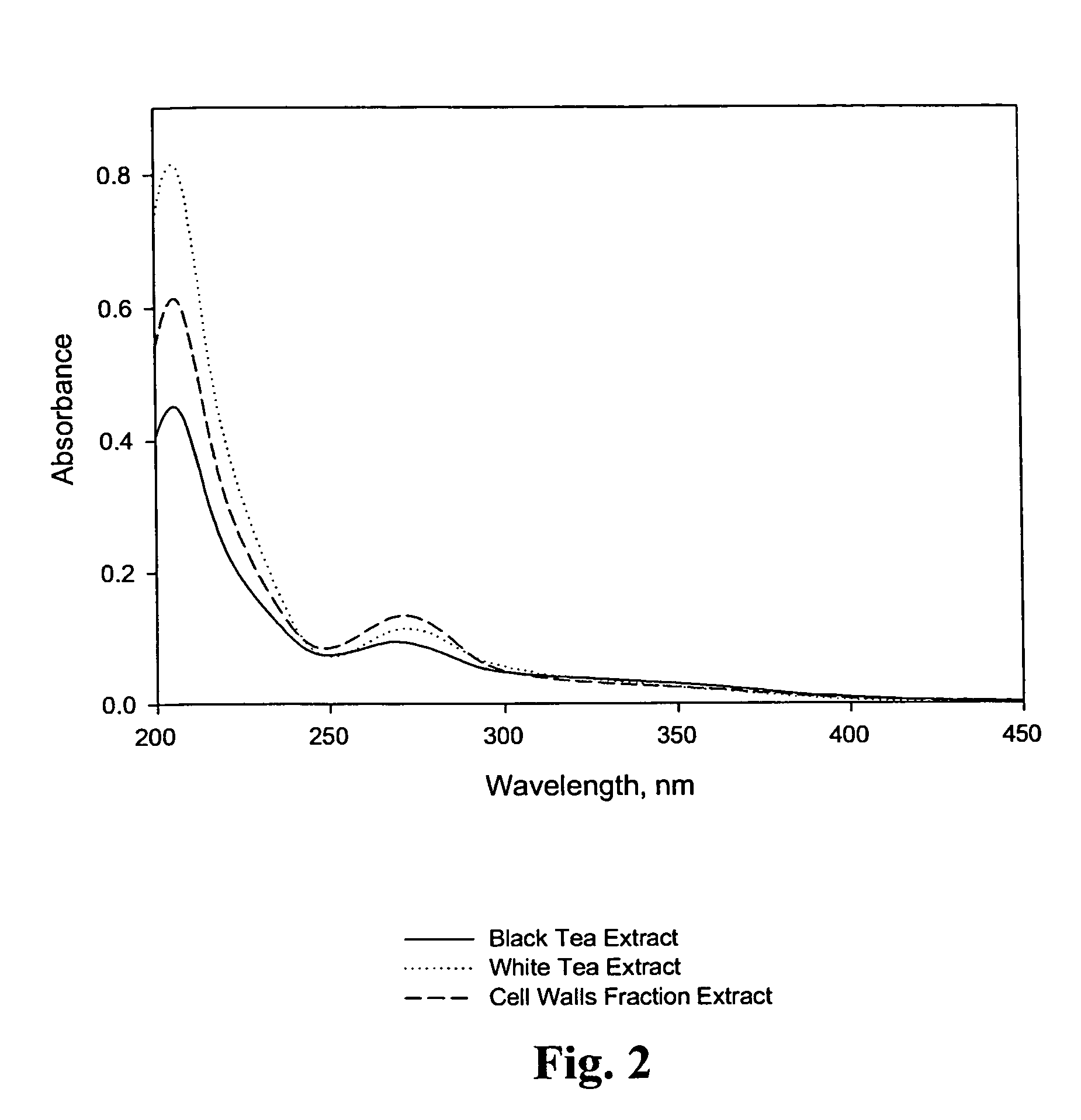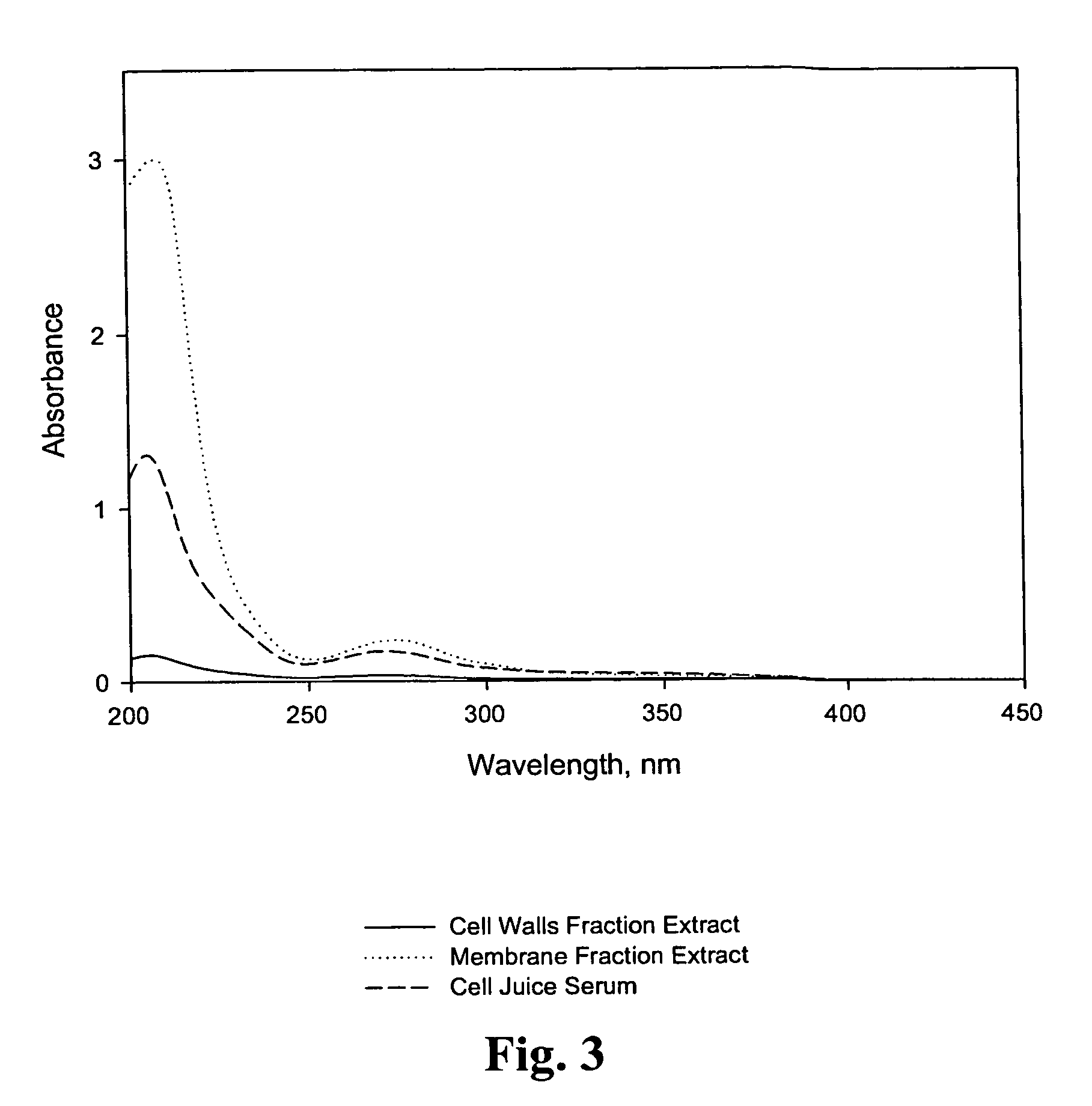Bioactive compositions from Theacea plants and processes for their production and use
a technology of bioactive compositions and plants, applied in the field of bioactive compositions and processes for their production from theacea plants, can solve the problems of reducing the therapeutic value and other potential benefits of fresh tea plant leaves, and achieve the effect of broad spectrum of potent bioactive compositions and powerful and diversified bioactive compositions
- Summary
- Abstract
- Description
- Claims
- Application Information
AI Technical Summary
Benefits of technology
Problems solved by technology
Method used
Image
Examples
example 1
Preparation of Bioactive Compositions Derived from Camellia sinensis Plants
[0090]A schematic of one embodiment of the method of preparing the bioactive compositions of the present invention is shown in FIG. 1. Below is a description of relevant aspects of one embodiment of the method of the present invention.
[0091]Biomass Preparation. Sufficient amounts of fresh Camellia (Camellia sinensis) plant biomass (only top tender young leaf tissue with buds) were harvested to yield approximately 100 kg of dry matter. The level of dry matter in the fresh biomass was calculated to be 21.70%, requiring harvesting of approximately 461 kg of fresh plant biomass to yield 100 kg of dry matter. Care was taken to preserve the inherent moisture content of the plant biomass and to avoid wilting due to moisture loss. The harvesting was conducted in such a manner as to avoid or minimize chopping, mashing, and crushing of the collected biomass to avoid the disruption of the leaf cell structure, which trig...
example 2
Distribution of Dry Matter Regarding Preparation of Bioactive Compositions from Camellia sinensis, Camellia japonica, Camellia reticulate, Camellia sasanqua, and Eurya sandwicensis
[0102]Various fractions collected during the production of bioactive compositions were analyzed and compared for dry matter distribution. Table 1 shows the distribution of 100 kg dry mater among products of fractionation of tea plants. It was determined that the process of the present invention permits extracted yield conversion into plant cell juices in the range of from about 20 to 30% of initial biomass dry matter. The yield of membrane fractions' dry matter was in the range from 5% to 10% of initial biomass dry matter and from 25% to 35% of cell juice dry matter. Table 1 shows that the yields of cytoplasm fractions dry matter did not exceed 1.0% of initial biomasses dry matter and subsequently 2.5% of cell juice supernatant dry matter. Most of cell juice supernatant dry matter was concentrated in cell...
example 3
Comparison of Composition A (Cell Walls Fraction Extract) and Conventional Tea Extracts
[0108]Various parameters of bioactive composition A and conventional white and black tea extracts obtained from the same batch of fresh Camellia sinensis were measured and subsequent results of these are presented in Table 3 (The used experimental methods are described in Examples 9 and 20, and in the U.S. patent application Publication No. 2003 / 0175235, which is hereby incorporated by reference in its entirety).
[0109]
TABLE 3Various Parameters of Bioactive Composition A and Extracts ofWhite and Black Teas.Extract ofCell WallsControlsFractionExtract ofExtract ofParameter(Composition A)White TeaBlack TeaDry Matter, %0.841.101.38pH5.245.524.96Conductivity, mS / cm1.572.235.32Total Dissolved Solids, g / L0.781.232.71Redox Potential, mV123159188Area under the5.7276.6044.616Spectra Curve (ASC)200-450 nm, Abs · nmASC: Dry Matter6.8186.0043.345Superoxide Scavenging26.3114.5227.1Activity (ICR50),μg DM / mlColor ...
PUM
| Property | Measurement | Unit |
|---|---|---|
| molecular weight | aaaaa | aaaaa |
| size | aaaaa | aaaaa |
| temperature | aaaaa | aaaaa |
Abstract
Description
Claims
Application Information
 Login to View More
Login to View More - R&D
- Intellectual Property
- Life Sciences
- Materials
- Tech Scout
- Unparalleled Data Quality
- Higher Quality Content
- 60% Fewer Hallucinations
Browse by: Latest US Patents, China's latest patents, Technical Efficacy Thesaurus, Application Domain, Technology Topic, Popular Technical Reports.
© 2025 PatSnap. All rights reserved.Legal|Privacy policy|Modern Slavery Act Transparency Statement|Sitemap|About US| Contact US: help@patsnap.com



